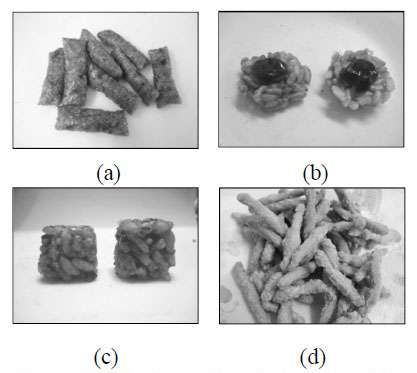Implementation of Quality Function Deployment and Kansei Engineering for GABA Rice Snack Development
Main Article Content
Abstract
GABA rice has gained popularity in Thai society during the last couple of years due to its high nutritional value, as well as a more healthy-conscious trend among Thai consumers. Product development for GABA rice snacks proposed in this study was based on a healthy snack target group. Mood Consumption theory was employed for dividing potential customers into 4 categories: Innovation, Intuition, Perfection and Satisfaction, and then, the Quality Function Deployment (QFD) technique was implemented for developing appropriate GABA snack products with respect to consumer’s preferences. Furthermore, Kansei engineering techniques have been implemented in order to suggest a proper snack package form for each specific group. According to these product development techniques, the results showed that each group of mood consumption customers presented different responses of the final products. However, most consumers preferred a product package with “easy to eat” and “attractive” character, leading to the preference of package designs as a quad seal or Doy pack bag. Finally, the proposed products and packages have been prototyped and verified by measuring consumers’ satisfaction levels.
Article Details
Published articles are under the copyright of the Environment and Natural Resources Journal effective when the article is accepted for publication thus granting Environment and Natural Resources Journal all rights for the work so that both parties may be protected from the consequences of unauthorized use. Partially or totally publication of an article elsewhere is possible only after the consent from the editors.

